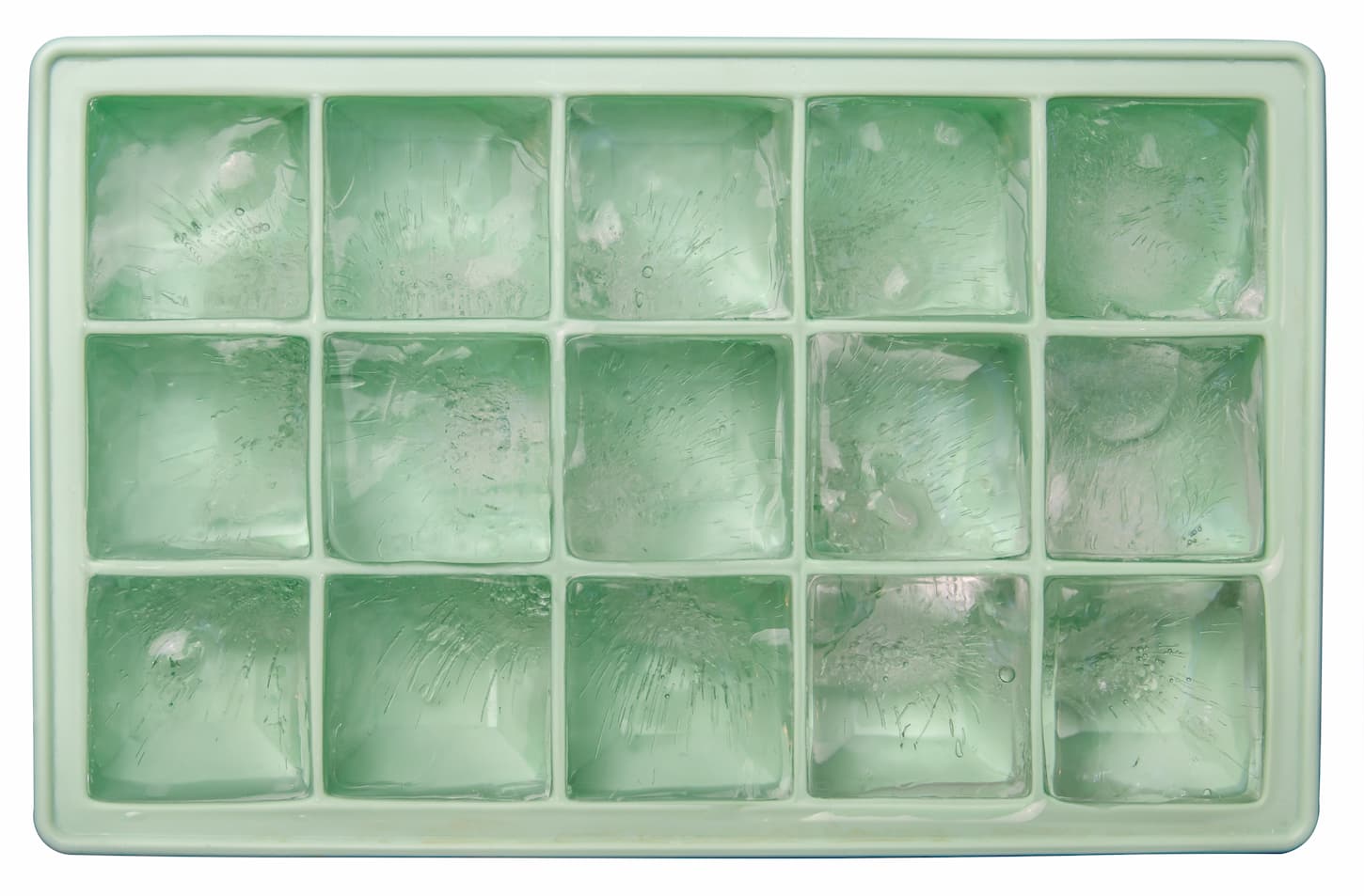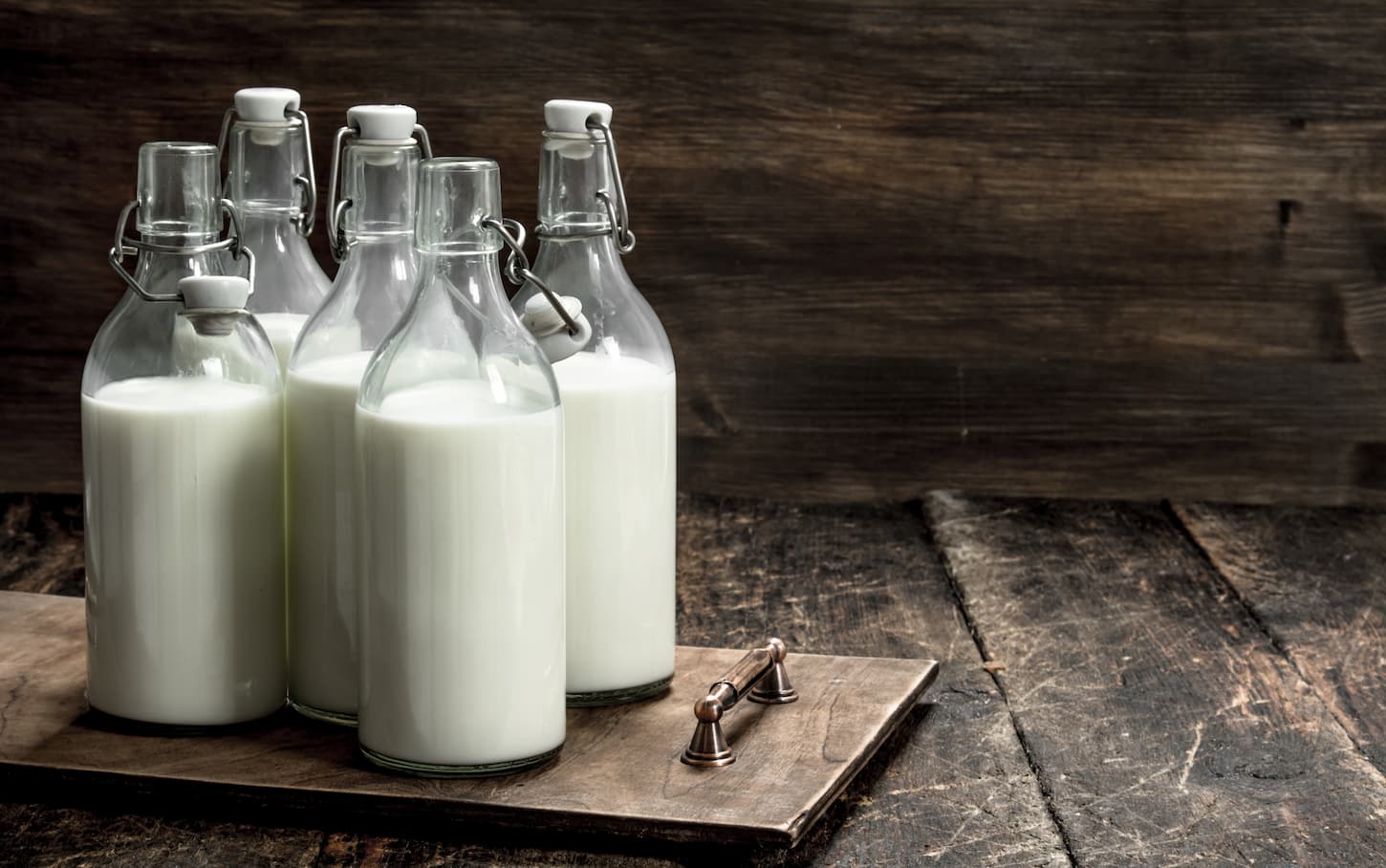Freezing dairy products for long-term storage is not always possible and is not the best solution. Furthermore, dairy that has been frozen in a regular freezer will only last about 3 months. Also, who wouldn’t want to freeze-dry milk that can last up to 20 years on the shelves?
Freeze-drying milk is easy, and it can be rehydrated and used in recipes. There are a few different methods for doing this. Pre-freezing the milk before putting it in the freeze-dryer is a good idea. This can be done using silicone ice cube trays or Ziploc bags, though ice trays are easier.
One of the best ingredients to have in the pantry is freeze-dried milk products. This post is perfect for anyone who wants to learn how to freeze-dry milk. Here are some tips below on how to freeze-dry milk products.

How to Freeze-dry Milk
If there is room in the refrigerator and freezer, then freeze-drying milk products are very easy to do. Here are some tips on how to freeze-dry milk.
For those who want to freeze-dry milk without any hassle, here are a couple of great tips below.
Step #1: Pre-freeze the milk in silicone ice cube trays first (Recommended)
Pre-freeze the milk by using a silicone tray – pour the milk into them and freeze them. After that, go ahead and pop those frozen milk cubes out.
With silicone ice cube trays, removing the frozen milk will be much easier. In addition to that, frozen milk cubes are the best. They can simply be crushed down so that they turn into powder.
You can also go more in-bulk by using Ziplock bags to hold up to a half-gallon of milk instead of smaller quantities in silicone ice trays, but it really doesn’t freeze-dry as well, and it makes a huge mess on the tray when you’re trying to get it out of the freeze-dryer.

Option 2: Pre-freeze the milk directly into the tray (NOT recommended)
Another easy tip for freeze-drying milk is to pour the milk directly into the freeze-drier trays. Pull a small portion of the tray out while it is still in the freeze-dryer, then just pour the milk in.
However, it is difficult to get the milk out of the tray and leaves a huge mess.
The upside to this option is it’s a lot faster upfront because pouring milk into trays is dang fast.
Option 3: Pre-freeze the milk in another container like a Ziploc bag (NOT recommended)
Again, this method technically works. However, freeze-drying a solid brick of a half or full-gallon-sized baggie of milk is extremely difficult. It likely won’t be completely dried in the middle.
It can also be difficult to get the frozen milk out of the bag and onto the freeze dryer trays, which it’s likely not to fit on.
So I also don’t recommend this option. It’s a great way to store milk in the freezer, but not great for freeze-drying.
Step #2: Freeze, Load, and Run the Freeze-Dryer
Once the milk is frozen, go ahead and get your freeze-dryer ready to go.
We like to start it before we load it so that it can be good and cold (we look for below -80 degrees Fahrenheit) so that when we pause the cycle to load the freeze dryer, we won’t thaw our foods and give bacteria a chance to grow.
As far as the freeze-dryer trays, you’ve got choices.
- Choice 1: put the trays in the freeze-dryer to pre-freeze with the unit. This works best if you’re still pre-freezing foods in the freezer or you only have one set of trays.
- Choice 2: use the freeze-dryer trays to hold the ice cube trays full of milk in the freezer. This works best if you have multiple sets of trays.
Either way, dump the milk cubes onto the trays when the trays and the freeze-dryer are both sufficiently cold to prevent much melting.
Note: You can load a warm freeze dryer to go. But then, pre-freezing milk was a waste of time.
Step #3: Test Freeze-Dried Milk for Longevity
Once your freeze-dryer is done, go ahead and test the milk for dryness. Ice cubes of milk should crack pretty easily and be bone dry.
From here, you can use our Ziplock test (load the milk into Ziplock bags with an oxygen absorber if you want and store them in a cool, dry place) for a few days to make sure it’s properly freeze-dried.
This will save you from wondering if the milk wasn’t totally done and help guarantee it’ll have the best possible shelf-life.
After it’s proven that it’s totally dry for 1-2 days, move the freeze-dried milk to a Mylar bag (or a mason jar). Add oxygen absorbers and seal.
Don’t forget to label the bag with the sealing date!
Step #5: Store Long-Term
Now that your milk is ready to store, put it in your long-term storage (a cool, dry place) for up to 20 to 25 years. If your milk was higher in fat, then it may not last as long as fat-free milk will.
The nutritional value of freeze-dried milk can be expected to be about 90 to 95% of the original values.

Best Tips for Freeze-dry Milk
For those who want to freeze-dry milk without any hassle, here are a couple of great tips below.
Tip #1: Pre-freeze the milk in ice cube trays
Pre-freezing milk in ice cube trays really is the way to go. Using a Ziplock bag to go in bulk seems like a great idea up front, but it’s harder to freeze-dry a big cube of frozen milk. It won’t freeze-dry in the middle unless you run the cycle for closer to a week.
Freeze-drying ice cubes, though, work pretty quickly and still lets you get a lot done. You can fit multiple ice cube trays worth of milk on a single freeze-dryer tray.
Tip #2: Be careful about freezing milk in other containers
While you can use some glass containers to freeze milk, be careful that you don’t fill them too full, or they could shatter in the freezer when the milk naturally expands while freezing.
You can read more about how freezing stuff in glass is safe in this article I wrote here: Can You Freeze Food in Pyrex? Here’s the Truth.
Tip #3: Do not freeze-dry milk with other foods that smell
Be careful of what foods are freeze-dried with the milk, even if they are on separate trays. The milk can absorb the odors, and it will taste weird.
Spoiler: don’t freeze-dry milk with garlic, onion, or other herbs.
Tip #4: End the cycle in a warm phase
End the cycle during the warm phase when freeze-drying, because there will be less chance of condensation. This will ensure that the milk is freeze-dried properly and will store well.
Tip #5: Crush the milk once freeze-dried for easier storage
Freeze-dried milk stores best when it’s crushed and powdered. The nice thing about doing it in ice cube trays is that once it’s in a Ziplock bag or a mylar bag, you can just roll it with a rolling pin to crush it. Easy peasy and it’s ready to store for years.
Tip #6: Measure every batch for a reconstitution ratio
Measure every batch of milk you freeze-dry to calculate the best reconstitution ratio for that milk. It doesn’t have to be hard, thankfully.
- Measure the entire batch of milk’s weight in grams before freeze-drying. You can measure in groups and add it up if that’s easier (it is).
- Measure the final weight (in grams) of the freeze-dried milk powder.
- Divide the dried weight by the original weight to get your ideal ratio.
- Write the ratio (of milk to water) on every container along with the processing date.
This will give you the ideal ratio for the specific milk. That way, it’ll have the best possible taste without being too watered down or too thick.
Do You Have to Pasteurize Milk Before Freeze-Drying It?
Pasteurizing the milk before the freeze-drying process begins is not necessary. However, the milk will store better, and its shelf life will be longer if it is pasteurized. The risk of contaminated milk is also lower after reconstitution.

Freeze-Drying Milk Tips by Type of Milk
Some types of milk have additional tips, freeze-drying tricks, or other advice from having learned the hard way how to freeze-dry it. Now that we know how to freeze-dry our milk, here are some tips for freeze-drying different types of milk.
Tips for freeze-drying goat milk
Goat milk is delicious! And it’s a great addition to your food storage rotation. Here are tips specifically for freeze-drying goat milk.
Tip #1: Store in the fridge before pre-freezing
Once the goat milk has been opened, it can be kept inside the fridge for about a week. In addition to that, goat milk only needs to be frozen if there is a surplus that cannot be used before it goes sour.
If you’re going to freeze-dry it anyway, get it chilled in the fridge and then pre-freeze it in ice cube trays for freeze-drying.
Tip #2: Mix well before serving
After thawing the goat milk it might be a little lumpy or separated during the freeze-drying process. No need to worry – this is normal. When the milk has thawed (or while reconstituting), shake it well and stir it to return to its desired consistency.
Pro tip: this will depend on the kind of goat milk. Our Nigerian dwarf goats’ milk didn’t separate easily. We still shook it to be safe, but it took about a week for it to settle.
Tip #3: Freeze small portions
Freezing goat milk in small servings is recommended because it’s much easier to thaw the milk. Freezing all the milk at once means that it will all need to be used at the same time. Freezing in small portions prevents wasting the milk.
Seriously. Just use the ice cube trays. They’re that much easier.
Tips for freeze-drying cow milk
First off, know that the yellow color in milk is normal. Don’t panic if the milk turns yellow – this is common and doesn’t mean it has gone sour.
The yellow tint in the milk is from the riboflavin, which freezes at a rate that is different from the rest of the milk. It’s pretty harmless, so there is no need to worry about anything.
Tips for freeze-drying sheep’s milk
Sheep’s milk really needs to be kept at the optimal temperature while preparing it to be freeze-dried, and just in general.
Fresh raw sheep’s milk will last for about 7-10 days when kept at an optimal temperature of about 36-38° F. (2.2-3.3°C.) A higher temperature will cause the milk to be sour and have a bad taste and reduces its shelf life.
Make sure the sheep’s milk stays in that range while refrigerated, or just freeze it immediately in preparation to freeze-dry it.
Tips for freeze-drying human (breast) milk: Freeze if not used within 24 hours
The best tip for freeze-drying human milk is to go ahead and pre-freeze it in an ice cube tray immediately. Then, get it into the freeze-dryer.
If you need to wait for the freeze-dryer to be available, keep the breast milk frozen.
- Do not fill an entire container with breast milk since it expands while freezing.
- Store the milk at the back of the freezer and not by the door.
- Milk may be frozen for about 9 to 12 months depending on what freezing method is used.
- Once the breast milk has been thawed, it should be used within 24 hours.
Get it freeze-dried ASAP for longer storage.
Tips for freeze-drying nut milk (walnut, cashew, etc.)
Nut-based kinds of milk are awesome. Our oldest boy drinks some regularly as part of his immunotherapy to manage his tree nut allergy. So we try to have nut milk on hand, and freeze-drying it is imperative for long-term storage.
Tip #1: Portion size
Decide the size of the portions needed and then freeze. Never refreeze nut milk, as it won’t be any good afterward.
Again, the ice cube tray is your best friend.
Tip #2: Blend after thawing or reconstituting
Some nut milk, like almonds, will separate when freezing and thawing. Once the milk has either defrosted or been reconstituted, pour it into the blender and mix it up.
Tip #3: Use separated nut milk in recipes
There is no way to fix the separation of milk. Drinking it straight might taste bad, so using it in recipes is good. Chugging it after blending it (and then pouring it into a blender bottle to keep shaking between sips) also works.
Tips for freeze-drying grain-based milk (like oat milk)
Again, grain-based kinds of milk are also amazing. My husband likes oat milk in some of his protein shakes.
Tip #1: Shorter lifespan for homemade oat milk
Store-bought oat milk lasts longer than homemade. While it is much healthier, it doesn’t have any preservatives that the store-bought milk includes, and it won’t stay fresh for as long.
So for that reason, freeze homemade oat milk in batches if it hasn’t been used within 5 days or it will go bad. Then, get it freeze-dried ASAP.
Tip #2: Strain after thawing (may or may not be needed when reconstituting)
Oat milk may become grainy after thawing. It’s not as bad after reconstitution, but it still may be slightly grainier than the original.
In order to lessen this, you may want to strain the milk into a cheesecloth to remove some of the extra little oaty granules.
Doing this will help improve the texture of oat milk after thawing. However, it might be a little less flavorful and might be a little watery compared to fresh oat milk.
Again, this is less of an issue after reconstitution than thawing, but it’s something to keep in mind if it is too gritty.

How To Reconstitute Freeze-Dried Milk
Weigh the milk before and after freeze-drying to come up with a ratio for reconstituting it based on the weight of the powder. Then reconstitute using an appropriate ratio with water or use in baking. It can also be mixed into baking recipes and stirred into drinks.
There’s a rule of thumb that says 1:1 is the right ratio for milk to water. However, I find that’s not always the case.
As far as advice on the ratios, we’ve yet to find a reliable ratio that applies to every milk. It really varies from one batch to another – and from one type of milk to another.
That’s why we weigh every batch both before and after freeze-drying to come up with a batch-specific ratio. Write the ratio on the bag! Trust me – you won’t remember it (we never do).
The nice thing is that, if you err on the side of too much freeze-dried milk powder compared to water, you can always thin it out some. It’s a lot harder to add more powder to get the consistency and flavor right because odds are, it’ll be when you’re running low on freeze-dried milk powder!
Our opinion: The best-tasting stored milk option is freeze-dried milk!
In our experience, it reconstitutes the best for the best flavor and texture. There is no difference in the flavor or texture after it has undergone freeze-drying and been reconstituted when compared to the original, as long as you let it reconstitute slowly.
Drink it straight, mix it in with your morning beverage of choice (or oatmeal), or even use it in your baking recipes. It will be just as good as the raw fresh milk coming from the goats out back or your cows.
Now let’s talk about steps to reconstitution.
- Add powdered freeze-dried milk to water in a closeable container.
- Shake well.
- Let it rest in the fridge for at least an hour.
- Shake it well again.
- Enjoy.
We really like using a shaker bottle for reconstituting our freeze-dried powders. That way, we can shake it all we want.
How to use freeze-dried milk
Reconstitute a 1:1 ratio of water and freeze-dried milk powder or use your calculated ratio. Fill a pint-sized mason jar or 16 oz. container with powdered milk, and fill it with the right water ratio. Let it sit for a few minutes before putting the lid on and then give it a really good shake.
Some people like to weigh the milk before freeze-drying and come up with a ratio for reconstituting it based on the weight of the milk powder. It’ll be far more accurate than the 1:1 rule of thumb.
How Long Does Freeze-Dried Milk Last?
Freeze-dried milk can stay good for 20 to 25 years, just the same as spray-dried whole milk powder. The flavor and shelf life of both are pretty much the same. The nutritional value should be about 90-95% of that of fresh milk.
There is no such thing as a fast expiration date for freeze-dried milk. Depending on how fresh the milk was when you first froze it inside the freezer will also dictate how long the freeze-dried milk lasts.
After 9 months, it may lose its flavor a little bit. This is also the reason why labeling the container with the date is a good idea.
Note: The ice cube trays work best when freeze-drying milk products like yogurt or sour cream. Transfer them to the tray after it’s been pre-frozen along with the rest of the freeze-dryer.
Or, if you want to use the freeze-dryer trays, then go ahead and spread a thick, flat coating on a freeze-drying tray. Then, reconstitute by adding water slowly and stirring until it returns to its original state.
It’s going to be a pain to clean the tray, though. You’ll wish you’d used the ice cube trays to pre-freeze.

Key Takeaways and Next Steps
Freeze-drying dairy products is easy if there is the right equipment to work with. Following all the directions for different types of milk, anyone should be able to freeze-dry milk without any problems.
Freeze-drying saves a lot of money and will prepare us for worse-case scenarios in the future.
That’s why I think having a freeze-dryer on hand is great, especially if you don’t have a backyard full of goats or cows you can milk.
Just in case you’re thinking about getting some, though, make sure you read my article on How Long Does Goat Milk Last? (Raw, Fresh, Frozen, Etc.) next!
Resources
Learning from your own experience is essential, but learning from others is also intelligent. These are the sources used in this article and our research to be more informed as homesteaders.
- Howard, Robin. “Rehydrating Freeze Dried Dairy.” Harvest Right Home Freeze Dryers, 15 Nov. 2019, harvestright.com/blog/2016/rehydrating-freeze-dried-dairy.
- “Tips for Freezing and Refrigerating Breast Milk.” HealthyChildren.Org, www.healthychildren.org/English/ages-stages/baby/breastfeeding/Pages/Storing-and-Preparing-Expressed-Breast-Milk.aspx. Accessed 17 Apr. 2022.
- Thomas, Carolyn. “How to Freeze Milk (Or Freeze-Dry Milk).” Homesteading Family, 26 Feb. 2022, homesteadingfamily.com/how-to-freeze-milk.
